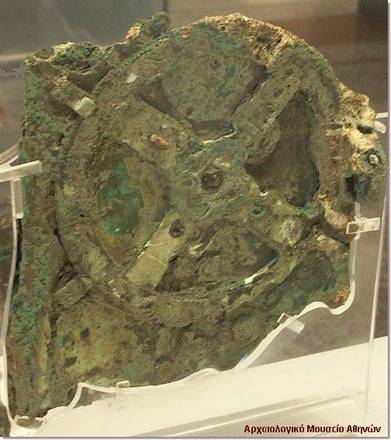Greece, Antikythera shipwreck on display
- On 07/03/2012
- In Underwater Archeology
- 0 comments

From Ansa Med
Over a century after the wreckage of Antikythera was found by chance (as often happens in the field of archaeology), the archaeological finds brought to light will be showcased together in the exhibition ''The Antikythera Shipwreck: the ship - the treasures - the Mechanism'' organised by Greece's National Archaeological Museum.
The show will be inaugurated on April 5 and will remain open until the end of April 2013. It boasts 378 finds, including sculptures, clay and bronze vases, coins, jewels, fragments of the ship, and, of course, the famous Antikythera Mechanism, considered the oldest computer ever made.
''The oldest example of technology surviving to the present day, which entirely changes our knowledge about ancient Greek technology,'' the British physicist and mathematician Derek De Solla Price said in speaking about this mysterious object, of which he is its first scholar.
Among the finds to be exhibited in the show are also dishes, jugs and amphorae with an acute base for the transporting of the water, oil, wine and dry food necessary for lengthy journeys.
Among the sculptures will be a life-size (1.93 metres high) statue of Hermes thought to be from the first century B.C., on which erosion from its lengthy stay under water is visible. The statue was likely to have been made by artists from the Polyclitus school, such as Cleon, Alypos and Polyclitus III. The bronze original has been dated at around 360-350 B.C.
The director of the National Archaeological Museum, Nikos Kaltsas, speaking to the weekly To Vima on the ship's load, said that the ship had been carrying ''decorations for the villa of a wealthy Roman or objects intended to be sold. This is shown by the refined taste of those who had ordered them, or by their potential buyers.
It would also mark the first known trade in art works, a phenomenon which was later to reach vast proportions in Western civilisation.''
The marble sculpture surfacing in the Antikythera wreckage can be divided into four categories on the basis of their style: the first includes copies of sculptures or variants on important works from classical antiquity.
The second are classical creations combining elements and compositions from different periods, enriched with the features of Hellenic art.
The third includes works intensely reminiscent of creations from the early and middle Hellenic period, and the fourth original creations from the late Hellenic one.
Add a comment